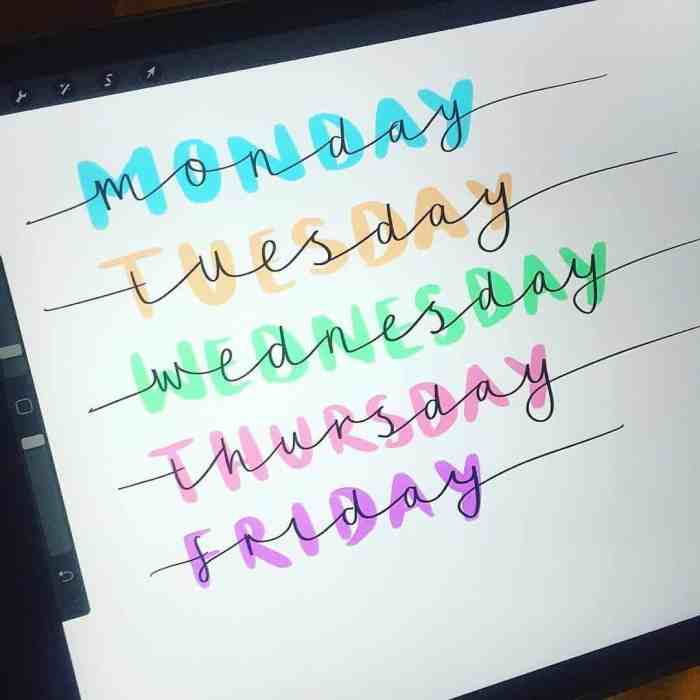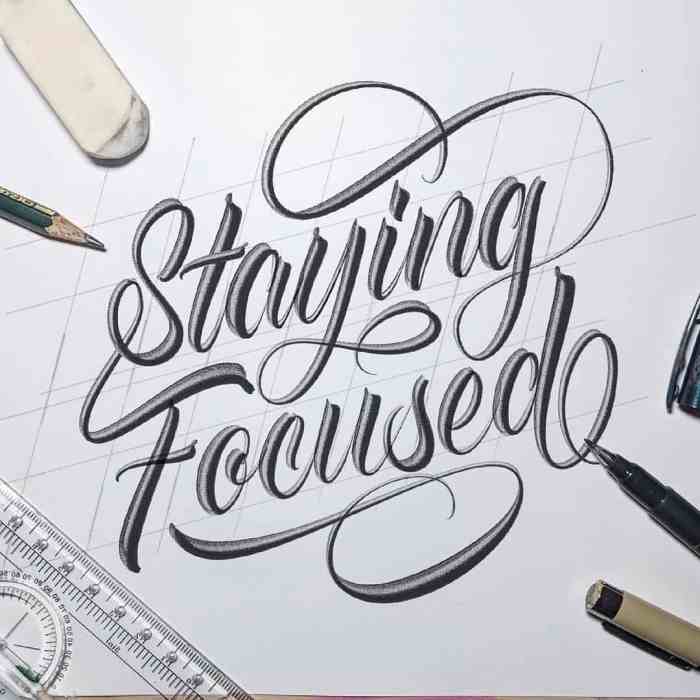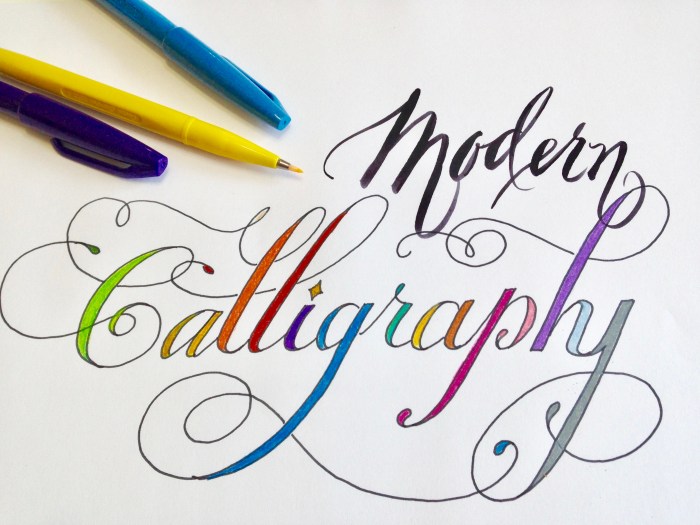Exploring the Art of Calligraphy Design
Embark on a journey through the intricate world of calligraphy design, where cultures, history, and creativity intertwine to create stunning visual masterpieces.
Delve into the tools, styles, techniques, and applications that make calligraphy design a unique and timeless art form.
Introduction to Calligraphy Design

Calligraphy design is a form of visual art that involves the creation of decorative handwriting or lettering. It holds significant cultural importance in various societies around the world, often used for manuscripts, official documents, and artistic expression.
With roots dating back to ancient civilizations such as Egypt, China, and Greece, calligraphy design has evolved over centuries, influenced by different cultures and writing systems. The art form has been practiced in religious texts, poetry, and everyday communication, showcasing the beauty and elegance of written language.
Styles and Techniques in Calligraphy Design
- Italic: Known for its slanted and flowing letters, commonly used in formal invitations and documents.
- Copperplate: Characterized by its intricate loops and flourishes, popular in wedding invitations and certificates.
- Gothic: Featuring bold, angular letterforms, often seen in medieval manuscripts and signage.
Tools and Materials for Calligraphy Design

When it comes to creating beautiful calligraphy designs, having the right tools and materials is crucial. Quality supplies can make a significant difference in the outcome of your work, ensuring precision and elegance in every stroke.
Essential Tools and Materials
Here are some essential tools and materials that every calligraphy artist should have:
- Nibs: Nibs come in various sizes and shapes, allowing artists to create different styles of calligraphy. It is important to choose nibs that suit your writing style and desired outcome.
- Ink: High-quality ink is essential for achieving smooth and consistent lines in calligraphy. Different types of ink, such as waterproof or non-waterproof, can also impact the final result.
- Paper: The type of paper used can affect the overall look of your calligraphy design. Thick, smooth paper is often preferred for calligraphy to prevent ink bleeding and ensure sharp lines.
- Rulers: Rulers are helpful for creating straight lines and maintaining consistent spacing in your calligraphy work. They can also be used for measuring and aligning text.
Importance of Quality Materials
Using high-quality tools and materials is essential for achieving precise and professional-looking calligraphy designs. Quality supplies can help you control the flow of ink, create sharp lines, and maintain consistency throughout your work. Investing in good materials can elevate the overall quality of your calligraphy and make your designs stand out.
Influence of Different Tools
Each tool used in calligraphy design can have a significant impact on the final outcome. For example, using a flexible nib can result in elegant, flowing lines, while a stiffer nib may create more defined strokes. Experimenting with different tools can help you discover new techniques and styles to enhance your calligraphy designs.
Calligraphy Design Styles

Calligraphy design encompasses a wide range of styles that vary across different cultures and regions. Let's explore some of the most popular calligraphy styles, including Western, Arabic, Chinese, and Japanese, each with its own unique characteristics and artistic expressions.
Western Calligraphy
Western calligraphy, also known as Roman calligraphy, is characterized by its use of the Latin alphabet. It is known for its elegant, flowing strokes and intricate flourishes. Some famous Western calligraphy artists include Edward Johnston, who is considered the father of modern calligraphy, and Donald Jackson, known for his work on The Saint John's Bible.
Arabic Calligraphy
Arabic calligraphy is a highly revered art form in the Islamic world, with its intricate and decorative designs. It is characterized by its flowing, cursive script and geometric patterns. One of the most famous Arabic calligraphy artists is Ibn Muqla, who developed the six primary scripts used in Arabic calligraphy.
Chinese Calligraphy
Chinese calligraphy, also known as Hanzi, is an ancient art form that emphasizes the beauty of brush strokes and characters. It is known for its balance, rhythm, and expressive forms. Wang Xizhi, a famous Chinese calligrapher from the Eastern Jin Dynasty, is celebrated for his mastery of the script.
Japanese Calligraphy
Japanese calligraphy, known as Shodo, focuses on expressing the beauty of simplicity and minimalism. It is characterized by its bold, dynamic brushwork and emphasis on empty space. One of the most renowned Japanese calligraphy artists is Wang Xizhi, known for his profound influence on the art form.
Techniques for Calligraphy Design
Mastering calligraphy design requires a good understanding of various techniques to create beautiful and elegant lettering. Here are some essential techniques to focus on:
Pressure Control
One of the key aspects of calligraphy design is pressure control. By varying the pressure applied to the pen, you can create thick and thin lines, adding depth and dimension to your lettering.
Stroke Width Variation
Experimenting with stroke width variation can help add character and style to your calligraphy designs. By adjusting the angle and pressure of your pen, you can achieve different line thicknesses for a more dynamic look.
Letter Spacing
Proper letter spacing is crucial for creating balanced and visually appealing calligraphy designs. Pay attention to the spacing between letters and words to ensure clarity and readability in your work.
Tips for Beginners
- Practice regularly to improve your control and precision.
- Study different calligraphy styles to broaden your skills and inspiration.
- Start with basic exercises to build a strong foundation before moving on to more complex designs.
Decorative Elements
Adding decorative elements like flourishes and embellishments can elevate your calligraphy designs. Experiment with swirls, loops, and other ornamental details to enhance the overall look of your lettering.
Applications of Calligraphy Design
Calligraphy design plays a crucial role in various applications, adding a touch of elegance and sophistication to different projects. Let's explore some of the practical uses and benefits of incorporating calligraphy design:
Invitations, Certificates, and More
- Invitations: Calligraphy design is commonly used in creating wedding invitations, birthday invitations, and other special event invites. The intricate and personalized nature of calligraphy adds a unique charm to these occasions.
- Certificates: Calligraphy design is often seen in certificates, diplomas, and awards, giving them a prestigious and timeless feel. The artistry of calligraphy enhances the significance of the accomplishments being recognized.
- Personalized Gifts: Calligraphy design can be used to create personalized gifts such as custom stationery, name cards, or framed quotes. These items become cherished keepsakes due to the personalized touch of calligraphy.
Integration into Digital Platforms and Graphic Design
- Social Media Graphics: Calligraphy design is frequently integrated into social media graphics, blog headers, and digital marketing materials to attract attention and convey a sense of style and creativity.
- Websites and Blogs: Calligraphy fonts are used in web design to enhance typography and make content more visually appealing. They can elevate the overall aesthetics of a website or blog.
- Logo Design: Calligraphy elements are often incorporated into logo designs for businesses, brands, and products to create a distinctive and memorable visual identity. Calligraphy adds a touch of sophistication and elegance to logos.
Enhancing Branding and Visual Identity
- Branding Materials: Calligraphy design is utilized in branding materials such as business cards, packaging, and promotional materials to create a strong brand image and evoke a sense of luxury or exclusivity.
- Visual Identity: Calligraphy design can help establish a unique visual identity for a brand, making it stand out in a competitive market. The artistry of calligraphy can communicate the brand's values and personality effectively.
- Product Labeling: Calligraphy fonts are often used in product labeling and packaging design to convey a sense of premium quality and craftsmanship, attracting customers with their aesthetic appeal.
Ultimate Conclusion
Immerse yourself in the elegance and beauty of calligraphy design as it continues to captivate hearts and minds with its rich history and boundless creativity.
Frequently Asked Questions
What are some common calligraphy design styles?
Popular calligraphy styles include Western, Arabic, Chinese, and Japanese.
What tools are essential for calligraphy design?
Essential tools include nibs, ink, paper, and rulers.
How can beginners improve their calligraphy design skills?
Beginners can improve by practicing basic techniques like pressure control and letter spacing.




